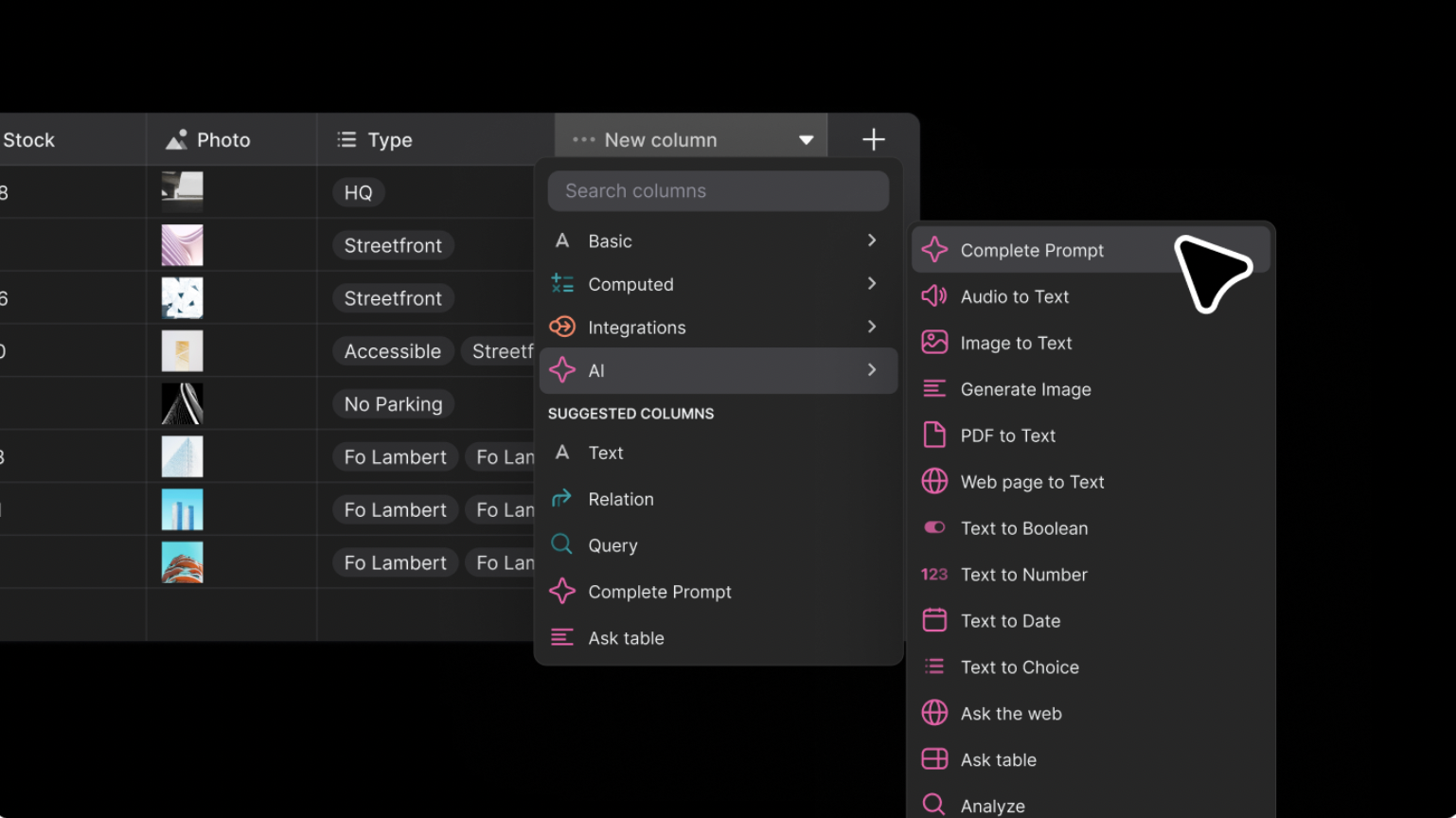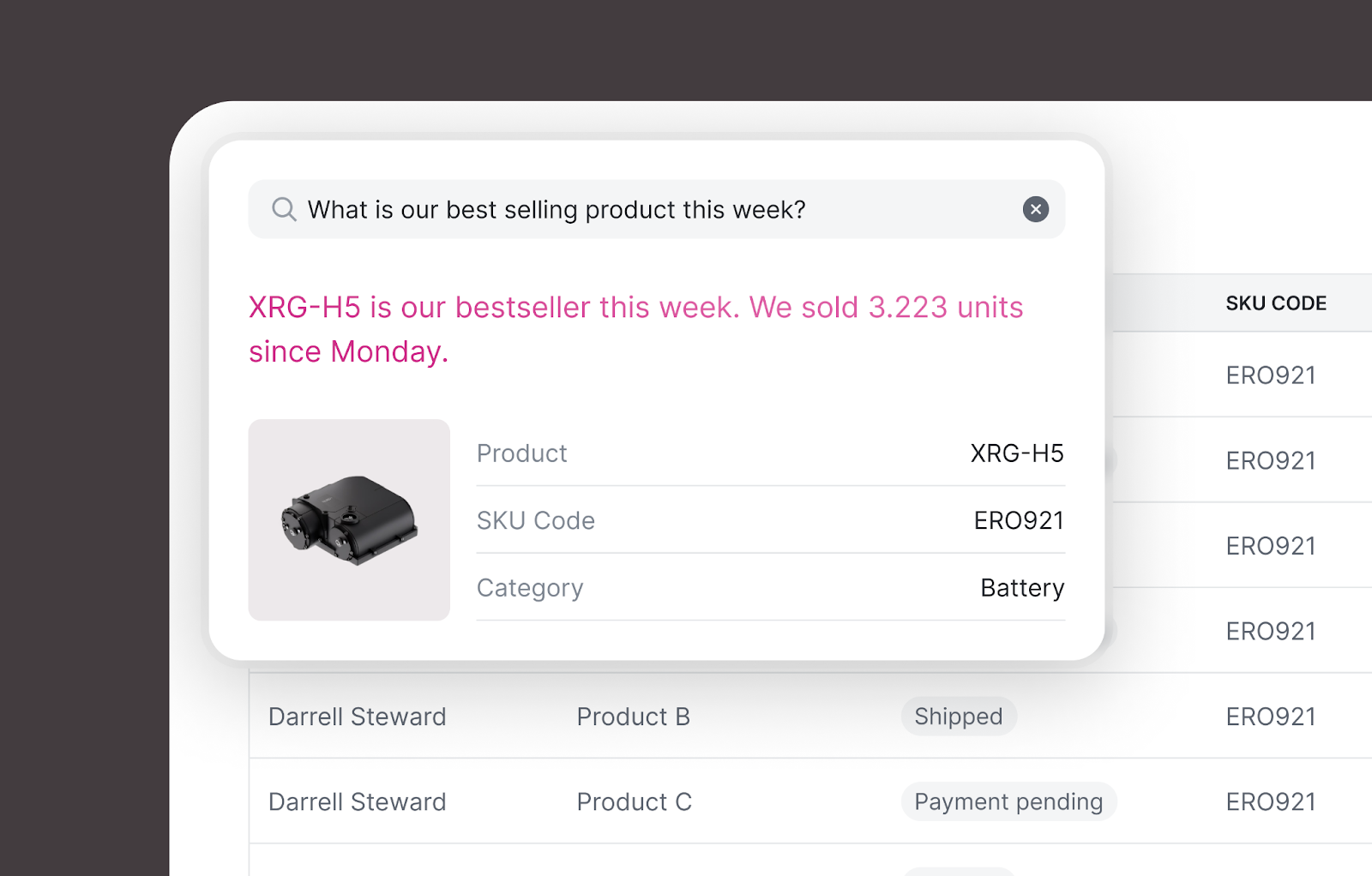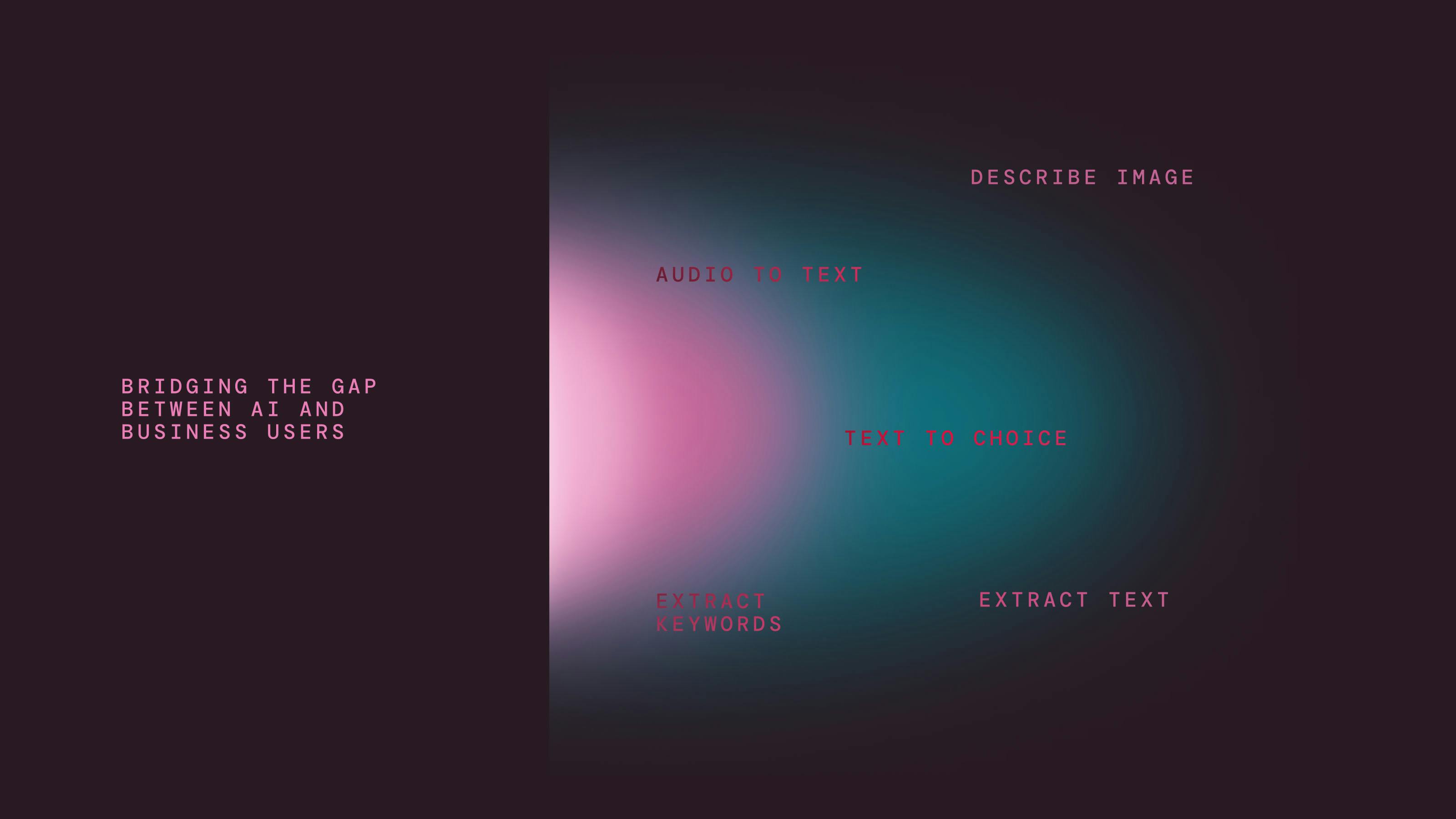Two possible approaches to AI and no-code development
At Glide, we’re dedicated to building a platform that allows anyone to create custom software that users love, without coding or design skills. Our approach is to remove extraneous details from the software creation process so our users can focus instead on the challenge they’re solving. AI brings us even closer to making this a reality with its promise of translating a user’s unstructured description of their problem (i.e. a natural language prompt) directly into structured app features like screens and calculations that solve their problem.
Jumping directly from a description of a problem to its software solution is the great promise of AI-driven software development. But, when we think more broadly about the value of AI to our customers, we think they can benefit much more by enhancing their own apps with AI features tailored to their specific use cases, that end-users can interact with. We refer to these two approaches as developer-focused AI and user-focused AI, respectively.
We see a lot of promise in developer-focused AI making software creation at least 10x easier. We recently spent a sprint prototyping an AI-assisted app builder that produces reliable results. But we’re still in the research phase and have some tough questions to answer before this approach will satisfy our customers.

Our AI-assisted app builder prototype
Reflecting on our mission to bring the power, beauty, and magic of software to a billion new creators, we see even more value in user-focused AI. When we put AI features into the hands of customers building apps, who understand the unique shape of their own problems, we see novel, highly-specialized AI apps applied to a broader set of problems and distributed to 100x as many users.
For over 40 years, people have used spreadsheets to explore new ideas, build businesses, and organize their lives. The success of spreadsheets is due to their remarkable balance of simplicity, flexibility, and power; they’re simple enough that anyone can learn the basics in minutes, they’re flexible enough to adapt to new problems, and they’re powerful enough to solve problems people care about.
Our dream at Glide is to make creating software even more common than creating spreadsheets—easy enough that anyone can create software to explore an idea or solve a problem in minutes. At the same time, using software should not feel like using spreadsheets—it should be fast, familiar, impossible to break, and beautiful.
Incorporating AI into your apps should be as simple. Just as spreadsheets get more powerful with formulas, we’re introducing native AI calculations in Glide to transform your business data in remarkable new ways. We’re building ‘AI formulas’ natively in Glide at the column level, including image-to-text, audio-to-text, answering questions about private business data, completing prompts, prompt-to-structure, and more.

AI formulas
This will radically increase the value that users get out of the data in their Glide apps, as we’ve already seen from customers using our OpenAI integration.
How our customers are using AI to transform their knowledge management
Marco Volpato used Glide to create an AI-powered inventory management app in order to streamline operations at his wholesale wine business. The company is one of the largest wine importers in Hong Kong. Marco and his team previously relied on spreadsheets to track and manage orders, but that quickly became clunky as the business grew. When Marco discovered Glide, he transformed those spreadsheets into an inventory management app. Recently, he took his Glide app a step further by using Glide’s OpenAI integration to arm his staff to open more accounts, close more deals, and make smarter decisions with nothing more than their voice. Marco’s AI-powered Glide app tracks inventory in multiple warehouses, groups purchase orders into various shipments, tracks sales orders, and much more—all without code. The app’s AI capabilities help generate short and concise descriptions of each wine, including its unique flavor profile, so even newly hired employees can recommend the best wines to each customer based on current stock and customer order history. As he put it, “Just a few years ago, building a complex and data-heavy app would’ve taken months and cost a small fortune. This inventory management app took me an afternoon to build.”

Cheese Meets Wine’s AI-Powered Inventory Management App
Glide Expert Robert Petitto built an IT helpdesk companion app so employees could self-serve and troubleshoot their own IT issues. The app combines private data about company devices like computers and wifi networks with prompt completion to provide answers to questions about technical support. This frees up valuable time and resources for IT teams that would previously have to address each support ticket manually.
Glide Expert and founder of LowCode Agency, Jesus Vargas built a voice-to-text app that captures voice notes, creates summaries, and generates transcriptions—all with an app he made in less than 30 minutes. What excites us most is that our customers are just getting started adding user-focused AI features to their apps, and we’re fanning the flames with native Glide features to make these use cases much simpler for anyone to create.
Bridging the gap between AI and business users
The AI landscape is very noisy at the moment. We’re excited by the powerful new interactions made possible by systems like ChatGPT, but we’re skeptical that chat is the only way users will prefer to interact with AI. Instead, we believe apps, with familiar facets like lists, buttons, and navigation, still provide a better interface for business users.

Our users agree. Since we rolled out the beta of our OpenAI integration, and more recently launched it in production, thousands of apps have already incorporated AI to accomplish various tasks like summarizing text, asking questions about data, and more.

Relative Popularity of OpenAI Integration Features by User Commands
We built Glide to be data-driven and powered by spreadsheets, so adding AI to your app is as easy as adding another column to your spreadsheet. In the coming months, Glide users can expect a built-in Glide AI feature that won’t require an OpenAI account to make building with AI even easier. Users can also expect AI-building workshops, docs, tutorials, and more community support.
If you’d like to experience an AI-powered Glide app that can help you brainstorm the powerful software you could build for your own business, we created an AI-powered app designer to help you get started. That’s right–an AI-powered app, to help you brainstorm even more apps that you could build in Glide. Just give it your company name and describe a problem you want to solve at your business, and the in-app AI will generate five app ideas for you, along with suggested features, time and cost savings, and the ability to export your ideas as nicely-formatted PDFs so you can pitch the projects and get building right away.
We can't wait to see what you create!







